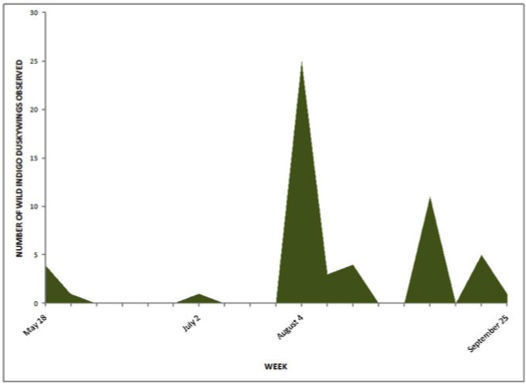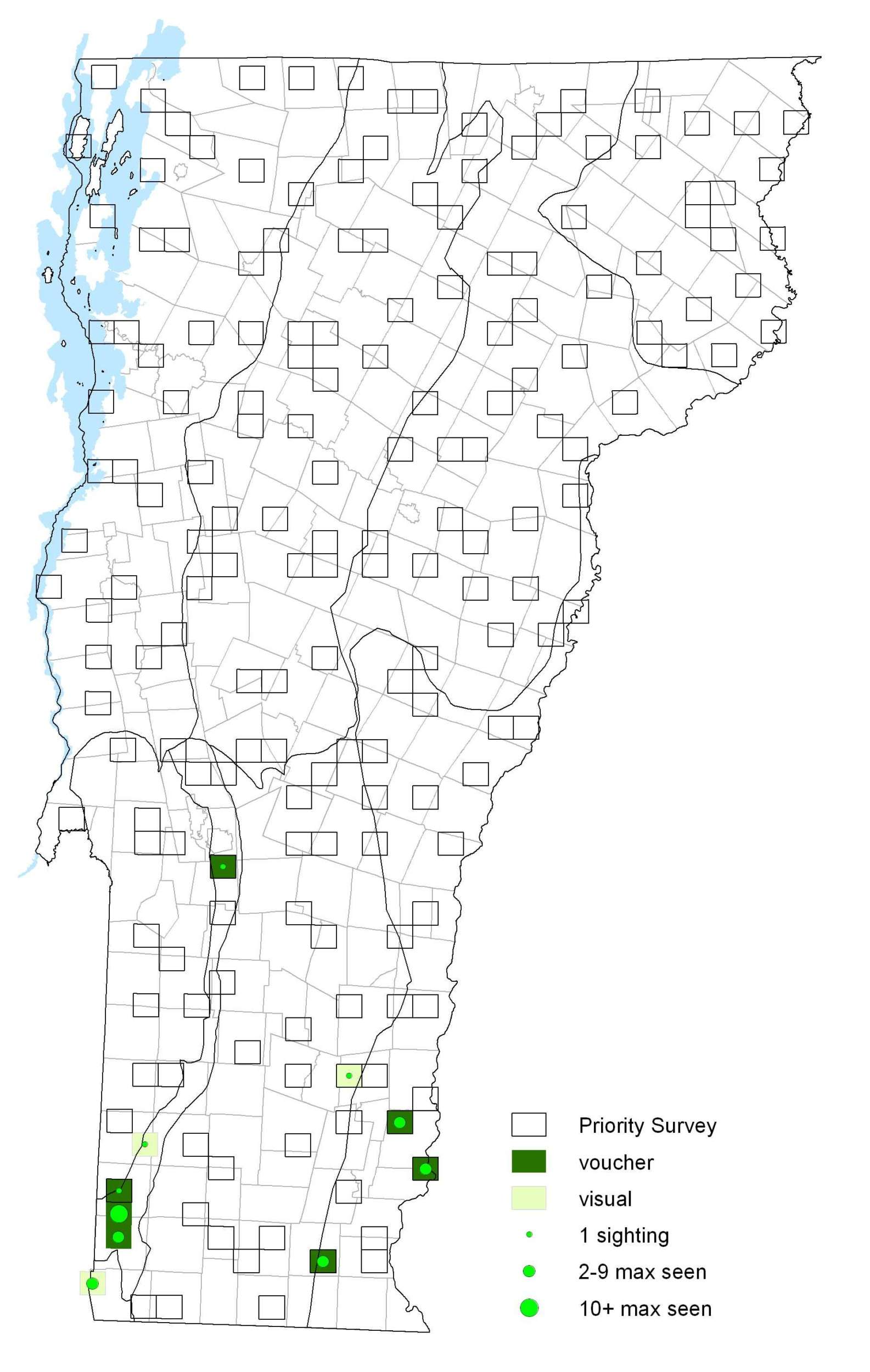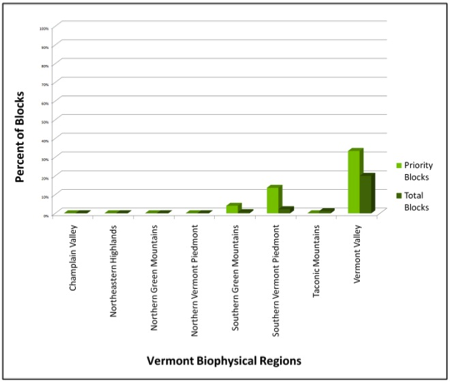|
Resident Conservation Status North American Range |
The Wild Indigo, Columbine and Persius duskywings belong to the “Persius complex,” a confusing group of very similar butterflies. It is rapidly expanding its range and abundance by colonizing plantings of crown vetch (Coronilla varia) along roadways and railroads over the past 30 years. Males perch in open areas on low shrubs to wait for females and will vigorously defend their territory from intruders. Eggs are deposited singly on the host plant. Last instar caterpillars from the second brood overwinter.
Identification
On average, smaller than other duskywings. Upperside of forewing is dark on the basal half and lighter on the outer half, with a distinct orange-brown patch at the end of the cell. Male has a costal fold containing yellow scent scales; female has a patch of scent scales on the 7th abdominal segment.
Flight
Usually two broods. Found in Vermont from the mid May through September. Highest abundance recorded in early August. Extreme dates: 18 May 2004 in Sunderland (K. Hemeon) and 25 September 2007 in Shaftsbury (K. Hemeon).
Distribution and Habitat
It was found only sporadically in southern Vermont during VBS. They are generalists and prefer open habitats such as barrens, fields and railroad beds. Adults will nectar from a wide array of flowers including dogbane (Apocynum), clover (Trifolium) and Blackberry (Rubus). Host plants include Wild Indigo (Baptisia tinctoria), Lupine (Lupinus perennis), and now commonly, introduced Crown Vetch (Coronilla varia) plantings. No historic records for Vermont were obtained.







